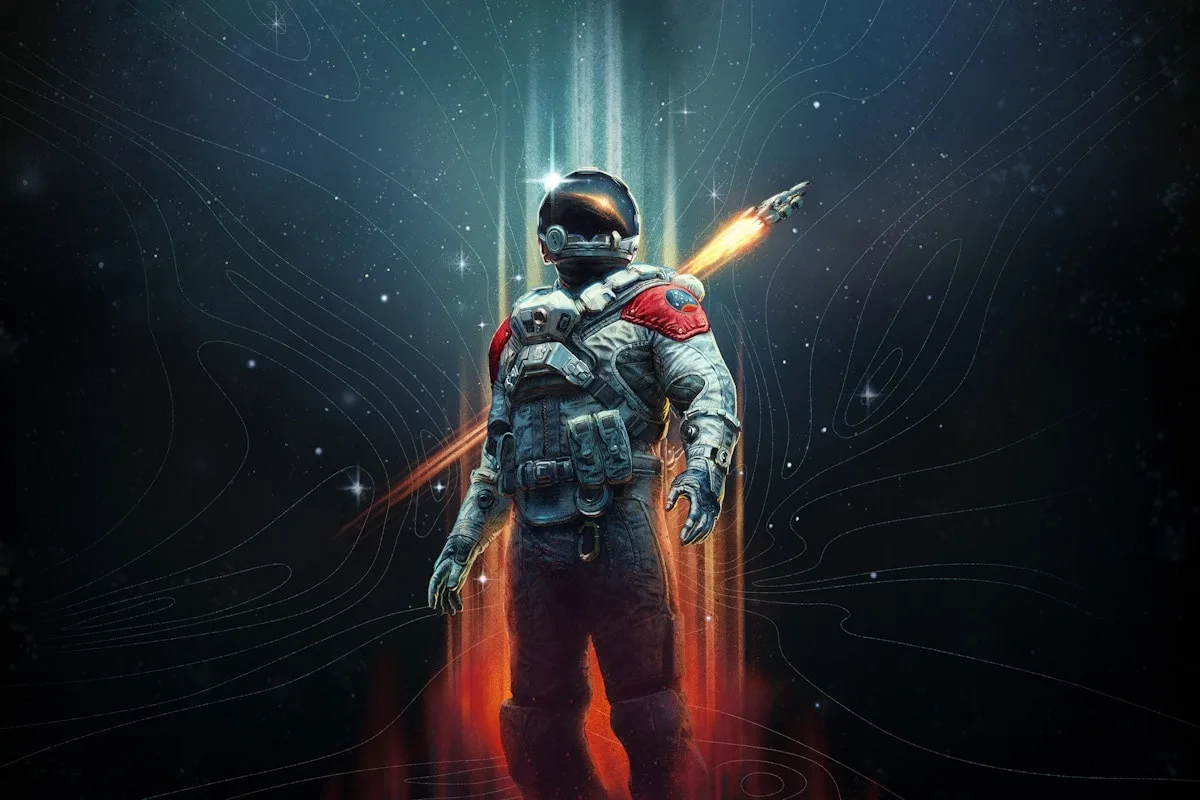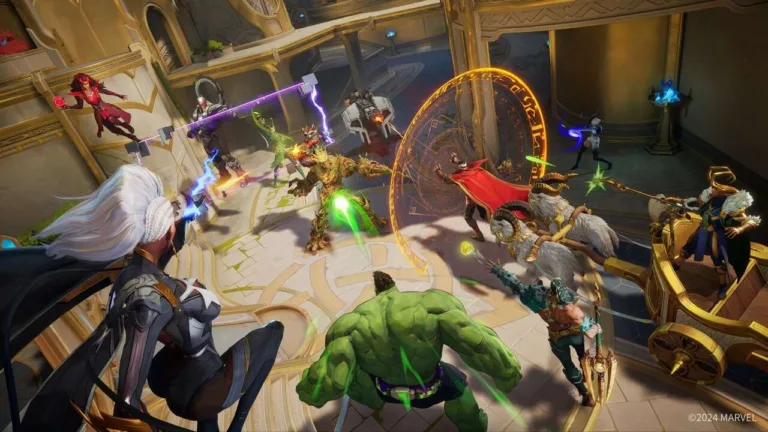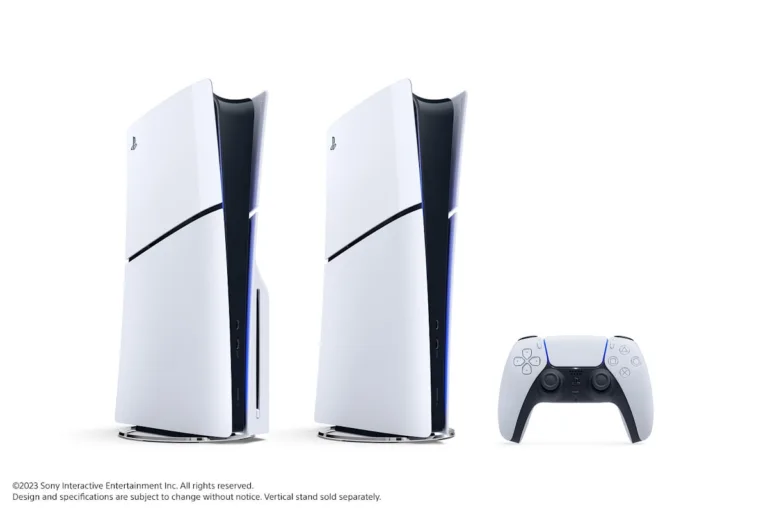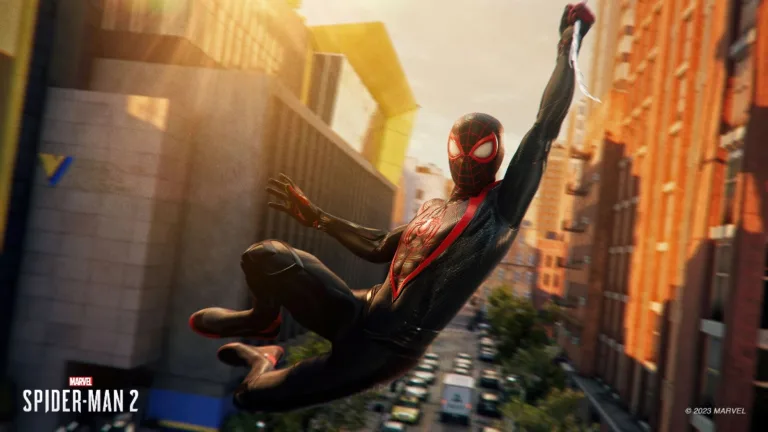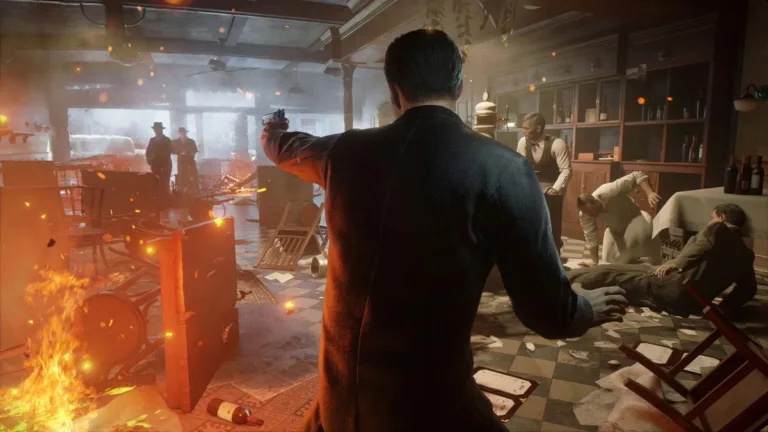Starfield Review: A Slow Liftoff, but the Ride’s Worth It
It’s no secret that Starfield — out now on PC and Xbox Series S/X — is hands down one of the most monumental game launches of the year. For Bethesda, it’s a gamble in uncharted territory as they undertake their first new universe in 25 years, set across the stars in a futuristic civilised corner of the Milky Way galaxy. For publisher Xbox, it’s an opportunity to bounce back from a lacklustre 2022 slate and dominate the gaming conversation for a long time — probably years, given the staying power director Todd Howard’s RPGs are notorious for. With over a thousand planets to explore, dashing factions to align with, and cosmic mysteries bubbling with political intrigue, Starfield aims to be the most complex spacefaring adventure of our generation. As such, it soars gracefully, but not without some turbulence.
Starfield review: Main story and its pitfalls
The year is 2330. Earth, what was once known as the ‘Blue Planet,’ lost its atmosphere and turned into an uninhabitable barren wasteland, causing humanity to leave and settle in other star systems. And so, our story begins in the cosmos, from the humble beginnings of a nameless space miner who’s unearthed a cavern and found a mysterious piece of shiny debris. Touching the shard pulls us into a bizarre trance of celestial visions and sounds that speak to us on a spiritual level, before blacking out. Open your eyes, and Starfield hits you with the classic RPG amnesia trope where one must remember who they are through in-depth character creation. It’s got all the hallmarks of a standard Bethesda game, sticking close to its role-playing blueprint of exploring, scavenging, and killing, albeit on a much grander scale that feels overwhelming a lot of the time.
Fair warning though: Starfield is extremely slow to start, restricting you to some bland exposition hunt for the first few hours, before opening things up and granting the freedom to explore any planets at will. I admit that the game soon becomes irresistible to put down, but that opening stretch could easily make or break the experience for many, as you mindlessly go from point A to point B or try getting attuned to its unorthodox menus. Personally, it took me over 10 hours for the game to finally get going, forming doubts in my mind if I’ll ever end up enjoying it. And it’s not like I hate passive openings either — most of my favourite movies are slow-burn dramas that spend a chunk of the runtime establishing their characters and the setting. Sadly, video games are a different beast altogether. They could easily go beyond 60 hours of playtime and thus demand 100 percent engagement.
Starfield to Cyberpunk 2077 Phantom Liberty, the Biggest Games Releasing in September
![]()
Character creation in Starfield is quite detailed, with swappable traits that make you feel like a blank slate
Photo Credit: Screenshot/ Rahul Chettiyar
It doesn’t help that Starfield’s main campaign isn’t all too compelling, having you join a ragtag group of interstellar explorers called the Constellation, who’re looking to track down artefacts of unknown origin — like the metallic one we encountered earlier. As you’d expect, the story hits familiar beats as we are tasked with hunting the mysterious artefacts down by venturing into other planets, throwing us into all sorts of wondrous adventures — from dark mines teeming with space raiders to deserted landscapes that serve as a graveyard for mechs. However, these stellar sequences are wrapped around repetitive missions that involve basic puzzle-solving, dispatching enemies, and floating around in potentially alien temples, which gets boring really fast and pivots into fetch quests that you feel coerced to do for the sake of pushing the story forward.
While the plot is certainly derivative with tonnes of sci-fi tropes stuffed in, there is some delight to be found through its intriguing cast of characters — precisely, our companions. None of them are really likeable at first, but bringing them along on adventures makes them open up about their feelings and backstories. The lone space cowboy Sam Coe became my favourite of the bunch, wanting to escape his celebrity father’s shadow and often musing about his early years smuggling across the vast expanse.
You learn there’s more depth to him than simply being a brazen peacekeeper when he brings along his daughter on board, stressing his overprotective nature as he never-endingly praises her smarts. But you also uncover a sense of entitlement and internal conflict in his parenting, where he questions whether it’s ideal to raise her under the risky, often life-threatening situations he puts himself through. It’s indeed humane, but I utterly despise how his backstory is unspooled — just incessant trauma dumping at random intervals, with no regard for your objectives.
Starfield Is Getting Nvidia DLSS Support, FOV Slider, and More in Future Updates
![]()
The companions’ plight came across as overly shallow at times
Photo Credit: Screenshot/ Rahul Chettiyar
The same could be said for other companions as well, though I wasn’t able to form equally strong connections with them. Sure, there’s some individual charm to Constellation chair Sarah Morgan’s drive to explore the stars, the easy-going adventurer Barrett, and the mysterious stealth expert Andreja, but their plight came across as overly shallow and at times, conveyed dully for me to care enough. You see, conversations in Starfield give you a close-up full-frontal view of the other person, revealing flaws in Bethesda’s character modelling, which limits certain facial expressions. Basic emotes like sorrow or happiness have a creepy demeanour to them, venturing into the uncanny valley — almost as if the NPCs are all secretly androids being trained to fake smiles. They all look dead inside, which isn’t helped by the often-stiff voice-acting that makes it tempting to read through subtitles quickly and spam-skip to the next line of dialogue.
Starfield review: Immersive side quests and world-building
Keeping with Bethesda’s tradition, Starfield’s true magic lies in its sprawling side quests that pop up along the way — most stemming from random gossip and world events. I wouldn’t call them all equally gripping to boot, but they all led to some unexpected encounters that often had a hint of tragedy to them. Once on foot, it’s easy to lose track of your initial goal and spend hours exploring the more populated, charming regions of the galaxy teeming with odd denizens who have a big or small ask of you.
One such locale was the suitably named Neon, a rain-drenched Blade Runner-esque cyberpunk city where I ran around threatening vandals, pocketing exotic fish-based psychedelic drugs, and vibing at the local dance club. But mainly, it was a place to make some big money, which I did by climbing the corporate ladders of Ryujin Industries, a massive tech corporation that deals with weapons, spaceships, and drones. Within the next couple of hours, I went from grabbing coffee for my superiors to heading out on espionage missions to sabotage rival corporations by breaking into their systems.
![]()
I had a lot of fun exploring the valleys of Neon, hoarding an immense amount of quests
Photo Credit: Screenshot/ Rahul Chettiyar
Safe to say, I’d become an integral asset of the faction, getting into the confidential stuff and being able to smooth-talk my way into restricted areas. This persuasive approach was something I decided from the very get-go — during character creation — with an extra trait that makes the cult favourite Adoring Fan from The Elder Scrolls IV: Oblivion follow me around and praise me at every given opportunity. His compliments served as some much-needed ego boost for finishing tasks with little to no bloodshed.
For some, these stealth-based storylines could be boring, so Starfield offers multiple factions to join, all of which have unique storylines to explore and rewards to accrue. And since you’re never hard-locked to a certain faction, you can explore pretty much every path the game has to offer — be it living out your space pirate fantasies, serving the militia, or bringing wrongdoers to justice as a planet-hopping cowboy. The last of them — joining the Freestar Collective — was a memorable affair, plunging me into a large-scale conspiracy that tested my moral alignment at every corner and hammered in the idea that in the line of peacekeeping, justice is never black or white.
Some quests are naturally conveyed through environmental storytelling. Early on in Starfield, I picked up a datapad from a fallen enemy, which led me to a fabled space vigilante’s secret lair holding a legendary armour and a tough spaceship. Stealing and equipping them led to some funny space interactions later on, with criminals mistaking me for the real Mantis, begging for mercy, and even handing over some credits just so I’d leave them alone.
Another time, I stumbled upon Juno, NASA’s real-life Jupiter space probe, which had now flown off course and turned into a rogue AI. When tasked with changing its control board, I learnt that it had become sentient and developed feelings of wanting to be treated like a real person. Next thing you know, I was engaged in an emotional debate about what it means to be human and what constitutes a machine. Starfield is filled to the brim with such intriguing side quests, a lot of which get deeper treatment than its generic main story. So, if you keep getting sidetracked on your journey, I’d highly recommend embracing and following through on them. They’re worth your time!
Despite being set 300 years in the future, Starfield’s overall aesthetic has a retro feel to it, rather than the fantastical holograms we’ve seen in other sci-fi titles like Mass Effect. Bethesda coined the term ‘NASA Punk‘ for this visual language, which grounds technology with tactile buttons and everyday knick-knacks like pens, notepads, and potted plants, in what feels like a realistic and plausible evolution. It’s a stylistic choice that radiates humanity’s presence and quirkiness, regardless of the centuries-long advancement.
![]()
Food looks so appetising in Starfield
Photo Credit: Screenshot/ Rahul Chettiyar
The streets of Neon City are characterised by the sounds of humming engines; Akila is a dusty wild west zone with a tavern in the middle; and the masses at New Atlantis tug briefcases around. There’s a futuristic food brand called Chunks that processes consumables like fruits, cooked poultry, and even beverages into unappetising little cubes — based on the idea that people don’t care what they eat, as long as it’s delicious. But, you can also run around stockpiling normal sandwiches, patty melts, kebabs, chicken tikka masala, sushi rolls; you name it, all of Starfield’s culinary curiosities feel deeply grounded and charming.
Starfield review: Exploration
Starfield’s scale is ambitiously massive, promising over 1,000 explorable planets that sound too good to be true. That level of scope is soon lowered upon realising that one cannot freely land a spaceship onto planets and take off, as No Man’s Sky did seven years ago. Instead of manual discovery, interplanetary transit in Starfield is achieved through a series of maps, menus, and an overwhelming amount of loading screens that simply break immersion. Here’s the gist of it: You pull open the galaxy’s map, select another star system you want to travel to, pick a planet within it, grav-jump to the destination, and then open the map once again to select a landing point, after which you’ll be treated to a cutscene of your ship descending onto the surface. In my opinion, this fast travel system also detaches you from the game’s universe by making things so systematically driven that I failed to find a sense of belonging on any of random planets I visited.
![]()
Interplanetary transit in Starfield is achieved through fast travels
Photo Credit: Screenshot/ Rahul Chettiyar
Each planet or moon might have pre-determined points of interest — some quest-oriented while others optional outposts and plants — where you can land and explore on foot. But one could also go off the beaten path and be greeted with procedurally generated locations, which are mostly barren and lacking in character. I won’t deny that stepping onto the now-abandoned Earth, a colonised Mars, and hopping across our moon in low gravity to stare upwards and bear witness to a heavenly cluster of stars wasn’t jaw-dropping, but that magic eventually wears off. Besides the brief run-ins with alien life forms, you’ll soon realise that most of the on-foot exploration is set across seemingly endless plains that sometimes throw in bandits into the mix or have a foreign ship land in the distance to create a sense of liveliness.
The general loop in such planets involves simply running around and mining for resources, which can then be used for weapon mods, spaceship upgrades, and outpost building. The last of them requires a LOT of grinding, so it’s best saved for late game. But perhaps the most annoying aspect of on-foot exploration is that it’s exclusively ‘on foot’. As in, we’re in the year 2330 and for some odd reason, there are no rovers to navigate across vast stretches of land. Even Death Stranding, which was comically branded as a ‘walking simulator,’ had the foresight to include vehicles for easy traversal.
What’s funny is that Starfield recognises this design flaw by giving you the option to pull out the scanner and warp back to your spaceship, just so you don’t have to mundanely backtrack for the next 5–10 minutes. All of this is compounded by its horribly blank surface map that doesn’t convey any information besides key points of interest. It gets even more annoying when guiding around cities, forcing you to memorise important shops and locations by yourself.
![]()
Yep, I was jamming to ‘A Cruel Angel’s Thesis’ while customising my ship
Photo Credit: Screenshot/ Rahul Chettiyar
While hurtling around in outer space, you might sometimes get roped into intense dogfights, which can be pretty unforgiving early on, as you struggle with managing multiple ship systems at once — from the engine and missiles to the shields, weight balance, and more. Since our starter ship sucks, we can spend hours customising the one we’ve got, buy new ones, or even steal and modify it to suit personal needs. The fights get increasingly satisfying and the skill upgrades simply make your ship stronger. There’s even one skill that’s heavily reminiscent of the VATS system from Fallout — Targeting Control Systems — letting you zoom in and lock onto enemy ships to target specific sensitive parts and gain an edge in battle.
Starfield review: Combat and skills
Gunplay in Starfield is significantly better than Bethesda’s past shooters like Fallout 4, though that was never a high bar to begin with. There’s a weird floatiness to firearms when aiming down sights and sometimes my shots just wouldn’t register, despite shooting foes point-blank. Another thing I noticed is that gunfights are pretty much unplayable in the third-person, due to issues like poor accuracy to an odd heft and clunkiness. Yes, I understand that it’s part of the so-called ‘Bethesda experience,’ but still feels odd for the devs to put all that time and effort into subtle animations. If you’re in the same boat as me, I’d suggest intermittently switching between the two perspectives — first-person for combat and third-person for everything else.
![]()
Upgrading individual skills requires you to grind, which can be tedious at times
Photo Credit: Screenshot/ Rahul Chettiyar
It’s crucial to remember that Starfield’s roots lie in the role-playing department, which makes combat prowess heavily dependent on your character’s build, rather than your own talent. Yes, being good at aiming helps to a degree, but if you don’t unlock certain skills through level-ups, your character won’t be as efficient in combat or other activities. The skill tree is divided into five subcategories: Physical, Social, Combat, Science, and Tech, with each of them branching into several skills within them. For instance, dumping skill points in Ballistics will increase the general firearm damage, whereas doing the same on the Gymnastics skill will let you slide around the map. It’s for you to decide what your character’s good at. However, upgrading those unlocked skills requires a lot more work since each of them is further segregated into four tiers with increasing perks. From here on out, you’re forced to grind out certain challenges for those ranks, before being allowed to invest a skill point and unlock it.
While the rewards are certainly worth it, I find the process to be rather tedious. Furthermore, the game locks some basic/ starter abilities behind the skill tree. Despite equipping a boost pack to double-jump across the map, you won’t be allowed to use it until you unlock the required skill from the Tech section. Similarly, you won’t be able to lockpick anything above a ‘Novice’ security level lock without upgrades, regardless of whether you as a player are able to decipher the key combination using your brains. Such useless stipulations feel like a waste of skill points.
![]()
Procedurally generated planets are largely barren
Photo Credit: Bethesda Softworks
Navigating through the vanilla inventory system also feels like a chore, as it doesn’t fit enough items on the screen, in addition to lacking options to sort them for quick access. For the latter, even a simple search function would’ve been a tremendous help. Encumberment is also a major issue in Starfield, disabling fast travels and rapidly depleting stamina upon carrying too much weight. Since you can pick up pretty much any tangible object in the game, your inventory is bound to be maxed out quite often, forcing you to constantly transfer or get rid of items.
Starfield review: Bugs, performance issues, and Bethesda jank
Bethesda titles have built a reputation for being incredibly buggy, but in Starfield, such instances were quite rare — nothing game-breaking that would hinder my playthrough. Some of the notable bugs I encountered include: characters walking into each other or standing atop high planes, enemies fusing with walls, dead bodies shooting up and getting stuck onto ceilings, NPCs facing the other direction while in conversation, and the objective marker occasionally directing me to head under the ground. Most of these were alleviated by simply reloading the save file, so I must admit that it’s a remarkably polished entry for Bethesda’s standards — albeit nothing of note in the AAA gaming space where you expect a certain level of polish. Meanwhile, the performance on PC was loaded with sporadic micro-stutters with some framerate dips when venturing out into crowded areas — specifically, in New Atlantis and Akila.
Another odd quirk I noticed was that for the longest time, my character had a bounty on their head, but not a single guard reacted to it until I decided to trigger a conversation with them. The same could be said for freely walking around with weapons armed, where the NPCs simply wouldn’t bat an eye, as long as I didn’t hurt anyone. I’m guessing this is an oversight, and it’s unfortunate to see it make it into the final build as it does go on to break the immersion a bit.
Starfield review: Verdict
Starfield is an imperfect but grandly immersive voyage into the vastness of the galaxy, rife with immaculate world-building that absorbs you in time. It’s a Bethesda game through and through, featuring an immense array of side quests and a quality role-playing system that favours player agency above all else. In the few moments that it tries breaking the mould, it under-delivers through its disjointed space exploration, poor navigation, and the banality of its main campaign. By dialling up the scale, I can’t help but feel like Bethesda Game Studios perhaps bit off more than it could chew here, resulting in an experience that at times gets swallowed in the cold, blackness of space. It’s an enjoyable ride nonetheless and a seismic achievement that Todd Howard and team can be proud of.
Rating (out of 10): 7
Starfield was released September 6 on PC, Xbox Series S/X, and Xbox Game Pass.
Pricing starts at Rs. 4,999 for the Standard Edition on Steam for PC. Meanwhile, both the PC and Xbox Series S/X versions from the Microsoft store cost Rs. 6,499.

